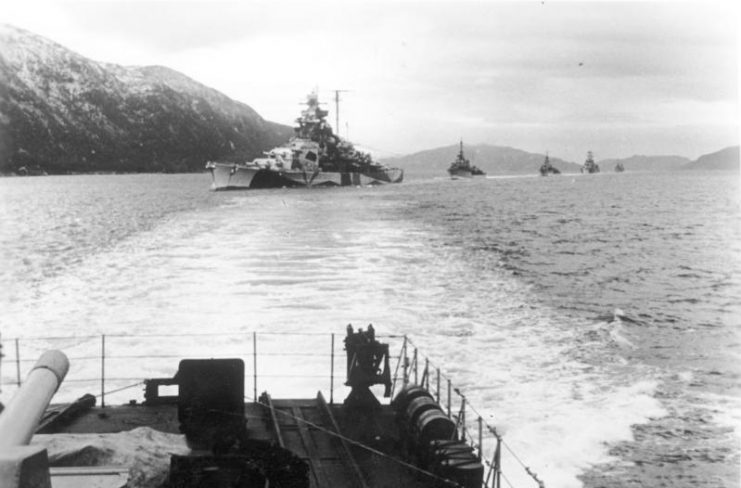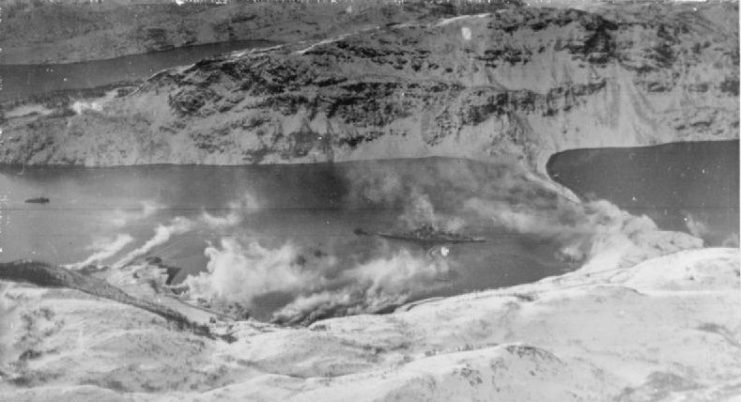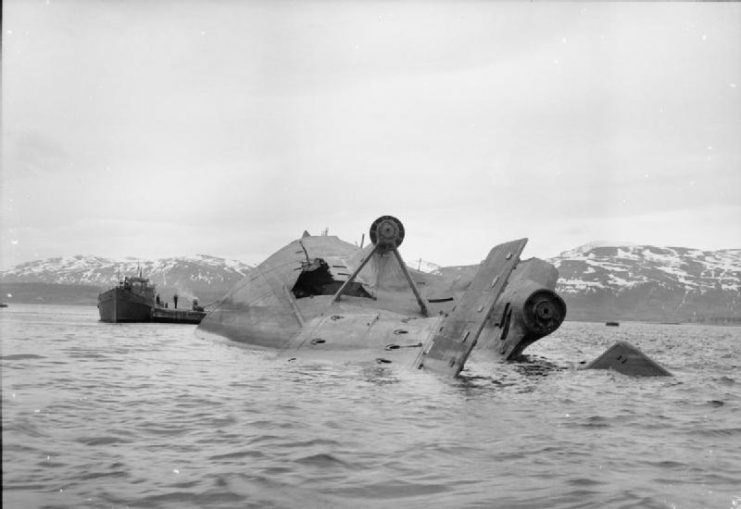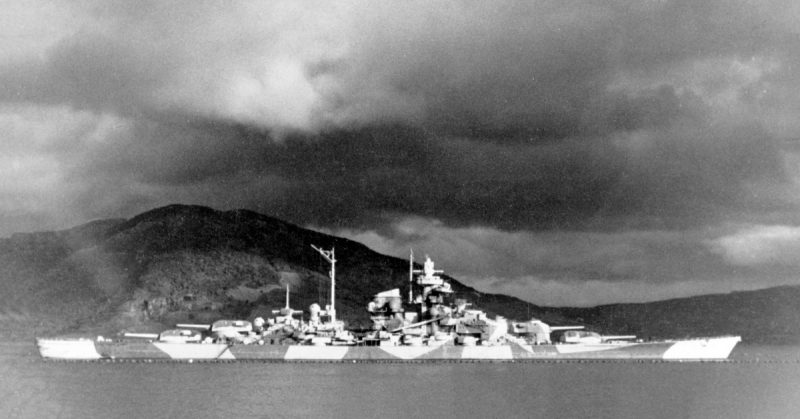The effects of the Second World War are still around us, affecting us in subtle, strange, and fundamental ways. One of the visible ways in which the legacy of the war still lingers is in the environment.
For example, in the forests surrounding the Norwegian fjords, there are trees that show absolutely no growth, as per the rings in the trees which are indicative of both growth and quality of the weather, for the year of 1945. Baffled by this discovery, Claudia Hartl, a dendrochronologist at the Johannes Gutenberg University in Mainz, Germany, was studying wood cores to get a full picture of the past regional climate when she discovered this fact. Naturally, she knew it was from the end of the second world war, but couldn’t pinpoint what it was about the war that would have caused this effect. Shortly after this discovery, one of her colleagues informed her about the history of the Tirpitz.
During the Second World War, the Nazis deployed the battleship, Tirpitz. The Tirpitz had two nicknames. Because it was rarely involved in operational deployments it was known as the “Lonely Queen of the North.” It was also known as “The Beast,” given out of the respect for the threat it posed to Allied convoys in the Barents Sea.

At 820 feet long and with a crew of 2,500 men, it is one of the largest battleships ever built by a European navy. The Germans would hide it in the fjords of Norway to attack convoys on their way to the Soviet Union, tie down British naval assets, and provide some protection against a potential invasion. It would travel from one fjord to another, seeking out signs of an invasion, hiding from aerial reconnaissance in an artificial chemical cloud of chlorosulfuric acid. According to new research, it this cloud of chemicals that negatively affected the surrounding pine and birch trees in Kåfjord, which is located in the northern tip of Norway, thereby stunting their growth.

The artificial fog damage begins with the needles on the trees. Without needles, trees cannot adequately photosynthesize, and therefore cannot produce any biomass. A pine tree’s needles usually survive from three to seven years because they’re evergreens, which means that should these trees lose their needles, it would take them a lengthy amount of time to completely recover.
According to the Center for Science Education, a lot of climate information can be gathered from studying tree rings. Growth is slowest during the colder seasons, culminating in a darker, thinner ring, while a light ring indicates swift growth in the warmer seasons. In contrast, growth rings that are completely absent are exceptionally rare, occurring in the southwestern United States during times of extreme drought, and in other cases because of insect infestation or severe cold.
Research indicates that one tree saw no development or growth until 1954, and even then it took 30 years to completely rejuvenate and grow at the same rate as before the war. The range of the damage extended to 2.5 miles in all directions, with each tree within that particular radius indicating levels of damage growing outward from the center, with greatest damage in the center, and the least amount at the 2.5-mile mark.

While the Tirpitz took some damage at Kåfjord, its fate was eventually sealed in late 1944 at the tail end of a continuous Allied search-and-destroy mission when it was sunk by RAF Lancasters in Tromso.
“I think it’s really interesting that the effects of one engagement are still evident in the forests of northern Norway more than 70 years later. In other places in Europe, they also used this artificial smoke and maybe also other chemicals. So perhaps you can find similar patterns and effects from WWII,” Hertl said.
Hertl presented her research at the European Geosciences Union (EGU) General Assembly in Vienna, Austria.
